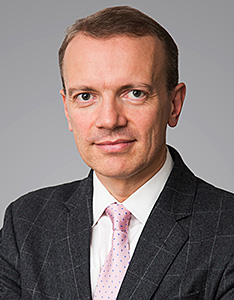One year ago EWEA became WindEurope. Our new name reflects the industry’s transformation from a niche energy sector into a large mainstream industry. And it underlines the growth and influence of our Association. Allow me to use this first anniversary to take stock and highlight some recent developments.
In our outreach to policy-makers, we have secured a number of successes over the last year. We helped turn the EU Clean Energy Package from what risked being an empty shell into a promising set of proposals. We are now lobbying the European Parliament to improve various elements of the legislation. And we’re working with the national wind associations to try to get the national governments to support the proposals in the Council of Ministers in Brussels – and to provide our industry with clarity and ambition through the National Energy & Climate Plans they have to write. We’ve now defined a formal WindEurope position on the Clean Energy Package proposals: crucially we’re now calling for the EU renewables target for 2030 to be raised from the “at least 27%” the Commission have proposed to “at least 35%.” There is a reasonable chance the European Parliament will support a higher target. The Member States will be resistant, but pressure on the target should help us secure other things in the negotiations.
An important feature of our first year as WindEurope has been an increase in coalition activity – lobbying jointly with other industries and doing things jointly with governments. A good example is the North Seas declaration on offshore energy cooperation, where 10 governments teamed up to create better conditions for the development of offshore wind. Our input to this process and our interactions with the governments concerned helped deliver the top-down political commitment and identify the bottom-up actions which will support cost reduction in offshore. With other industries, including energy-intensives, we formed a “Friends of Flexibility” coalition to push for more demand response in the electricity system. In the EU Electro-Mobility platform we’re working with e.g. Tesla and Renault-Nissan to accelerate the decarbonisation of transport. We’re working with the chemicals and others sector to promote corporate renewables PPAs: and we have a joint event on this on 11 October in Brussels. We’ve formed a new alliance with the hydrogen industry to promote green hydrogen (i.e. electrolysed renewables) in transport, heating and industry. In the new WindEurope Ports Platform, we’re helping ports develop their services and infrastructure for offshore. And we’ve formed a platform of military authorities to spread good practice on how wind can co-exist with radar and low-altitude flying. Working in coalitions has also enabled us to broaden our membership. Over the last months, we have welcomed big law firms and energy traders as well as petrochemical and data companies.
WindEurope members continue to benefit from market intelligence, networking and brand exposure. With our new Daily Wind Power Numbers platform, you now find out every morning what was the share of wind in your country’s power mix the previous day, and you can share this information in a nice graphic format with your contacts, stakeholders, customers and broader society.
One important piece of news. The WindEurope Board recently decided that our annual event in 2019 should take place in Bilbao (in the spring) and that we should do an offshore event towards the end of 2019 in Copenhagen.
Finally, one year on from our rebranding as WindEurope we have decided to re-brand this monthly newsletter. From now on what we used to call our “Brussels Brief” will be the “WindEurope Bulletin”.
.– Giles Dickson


